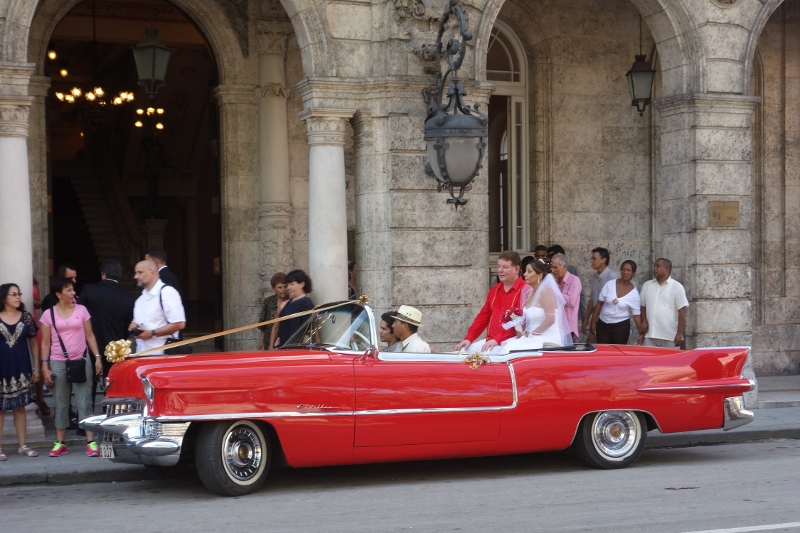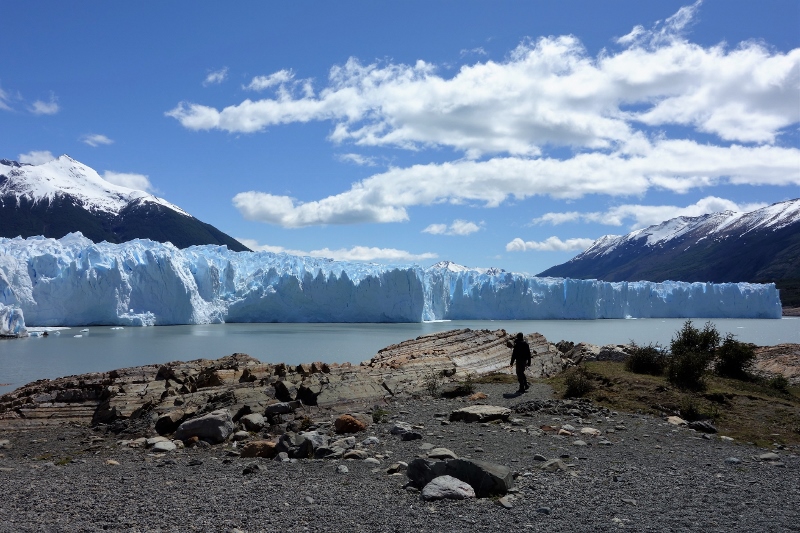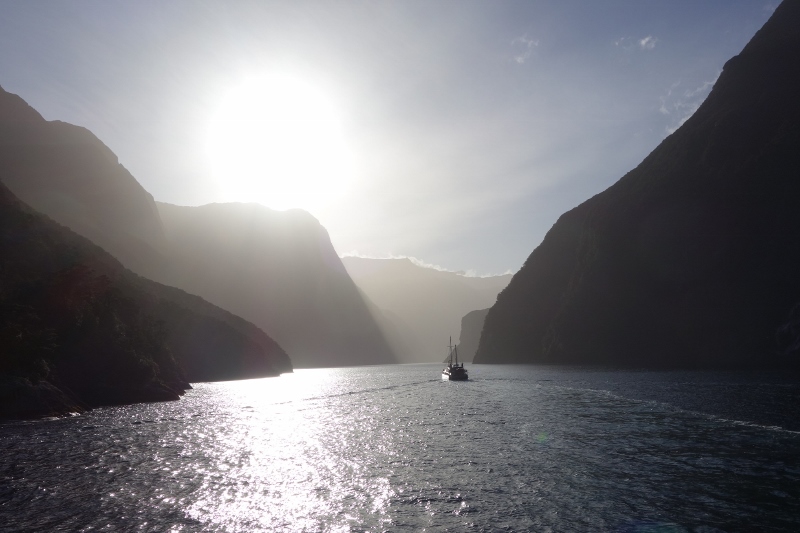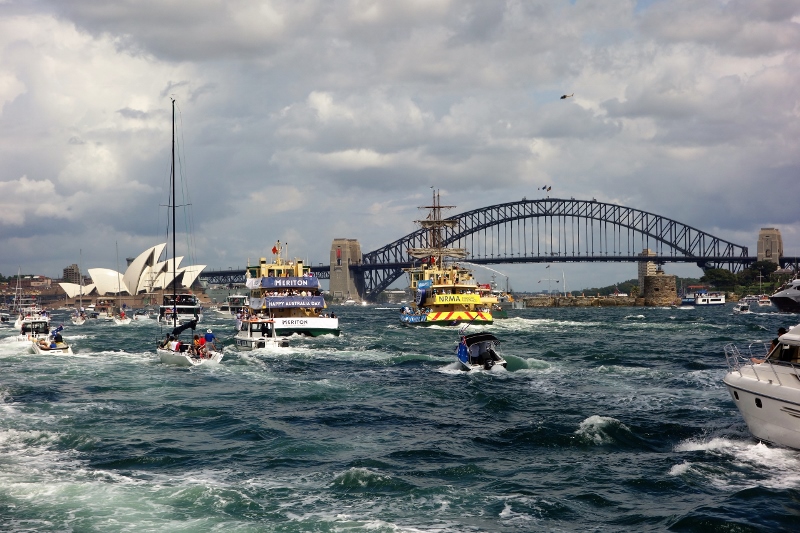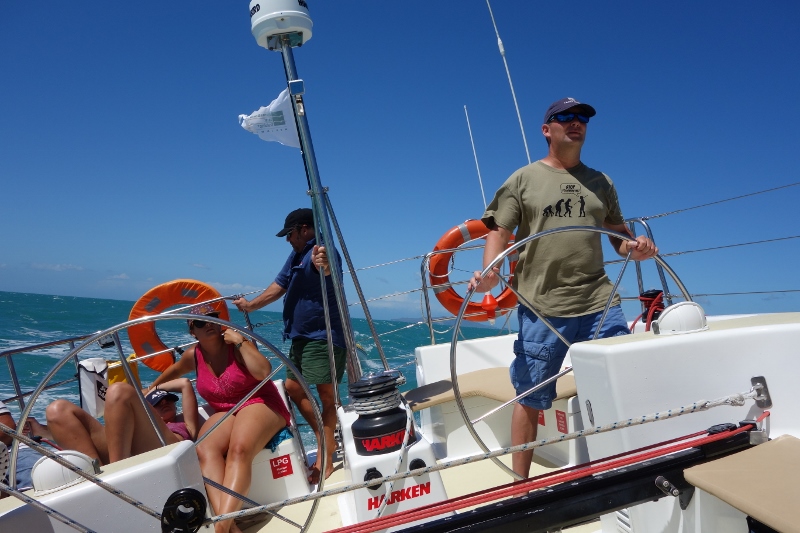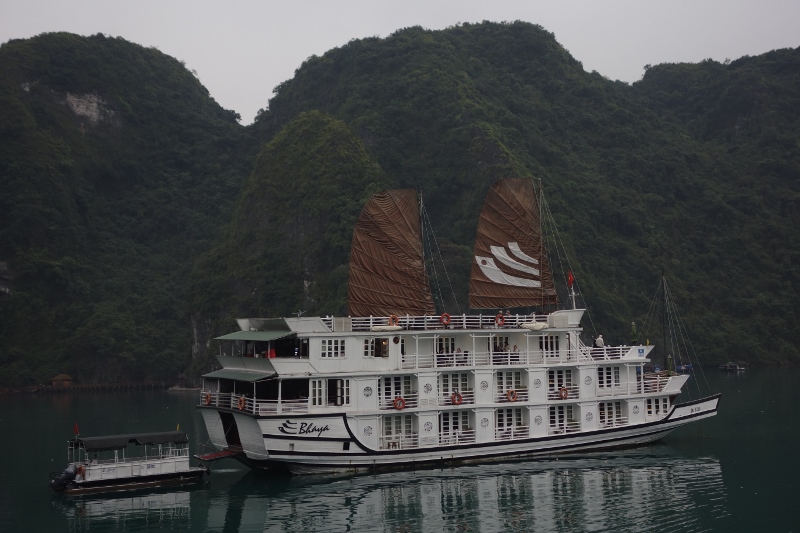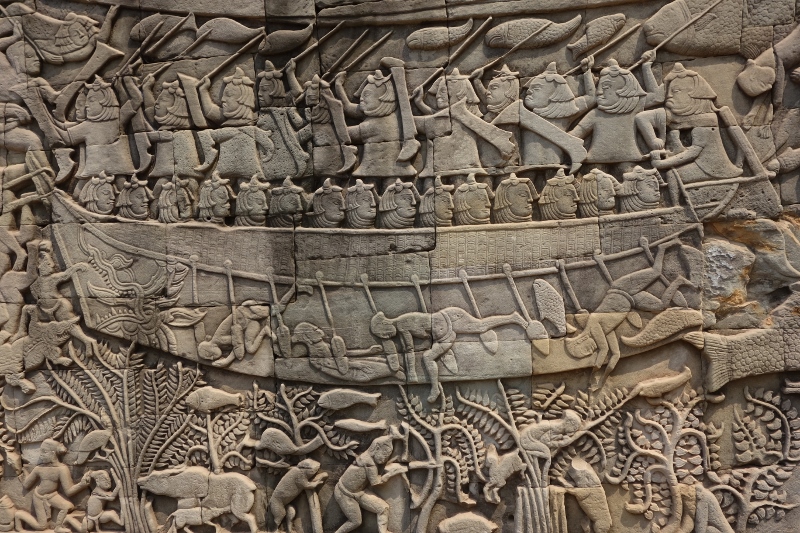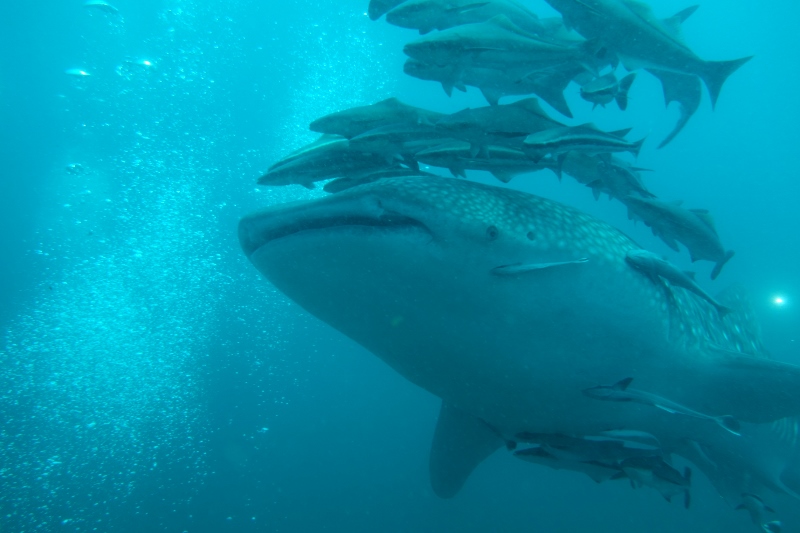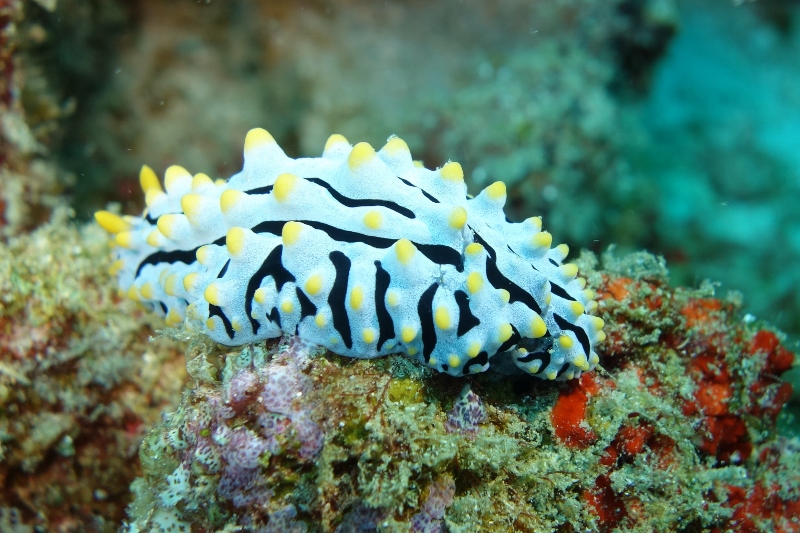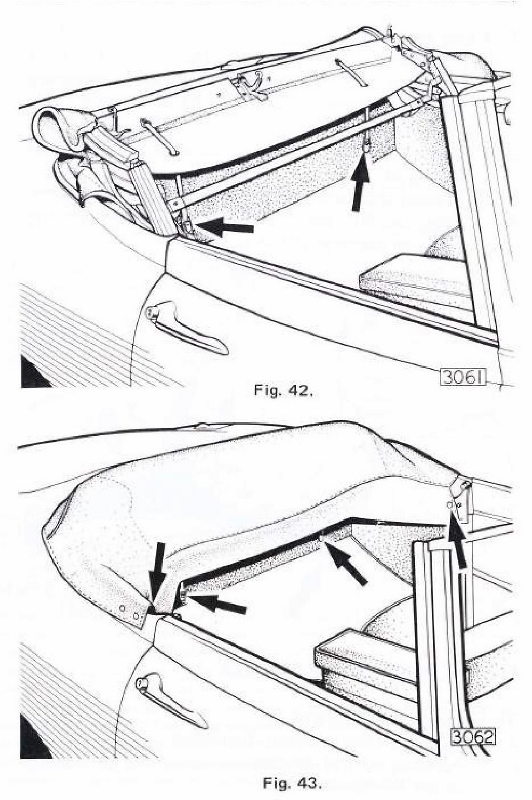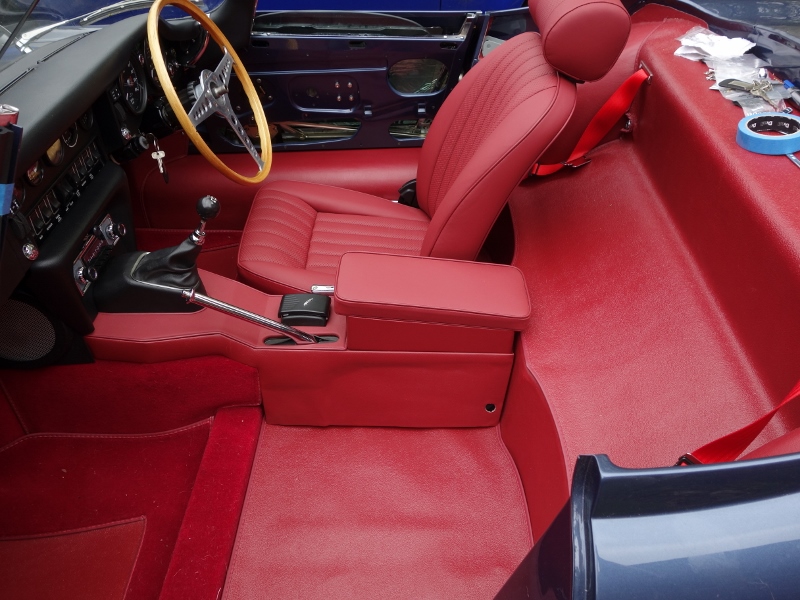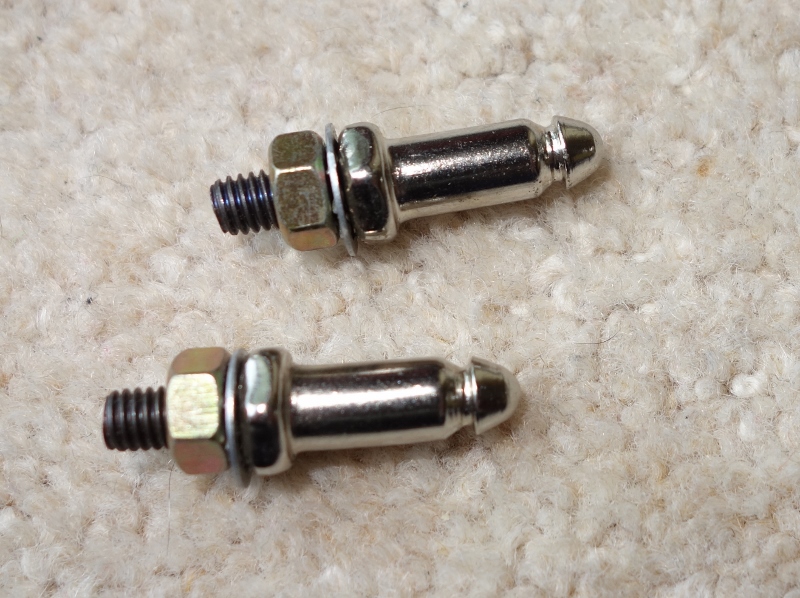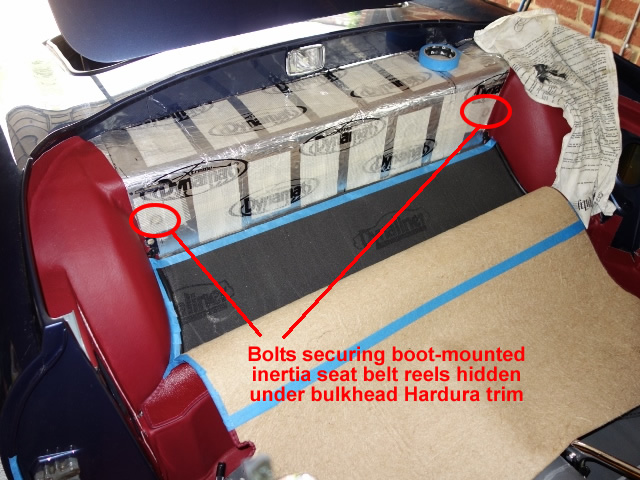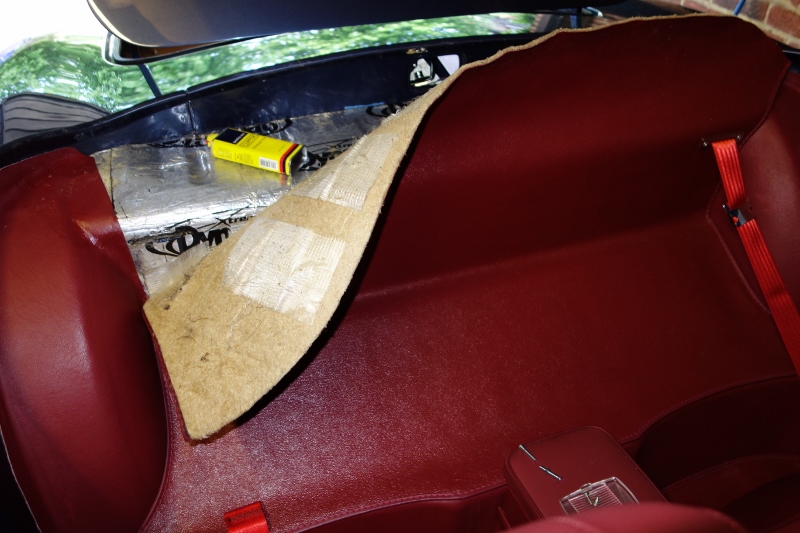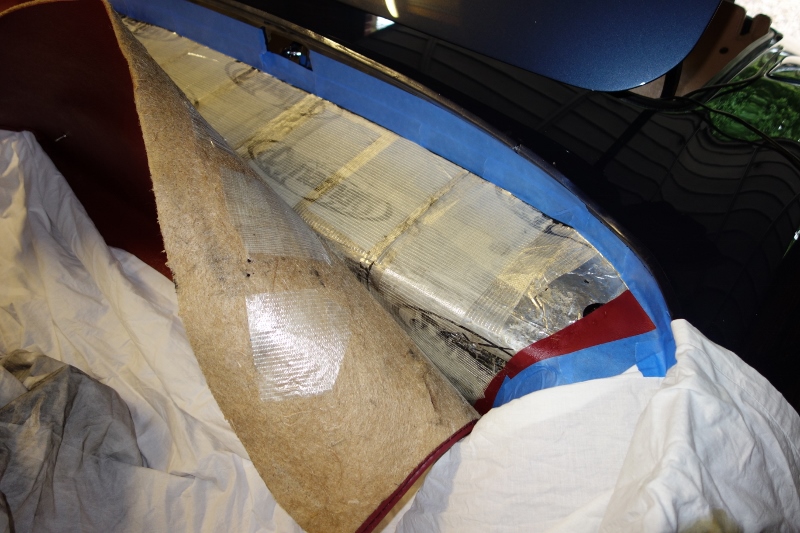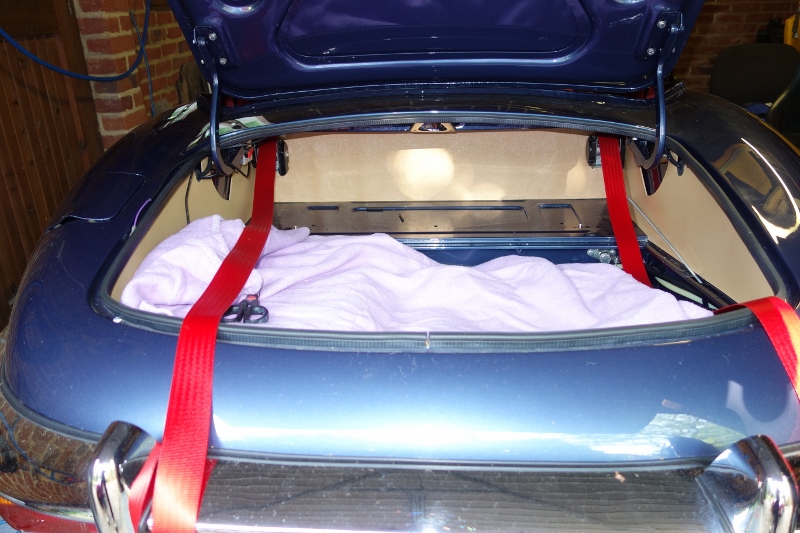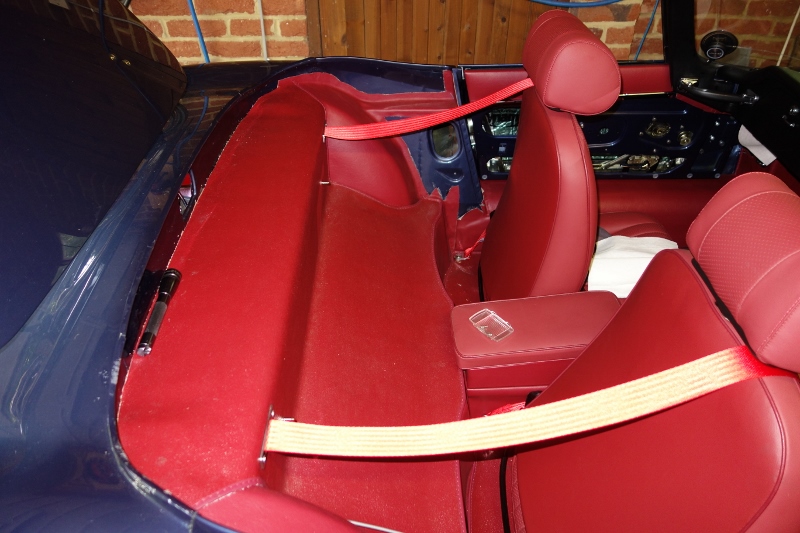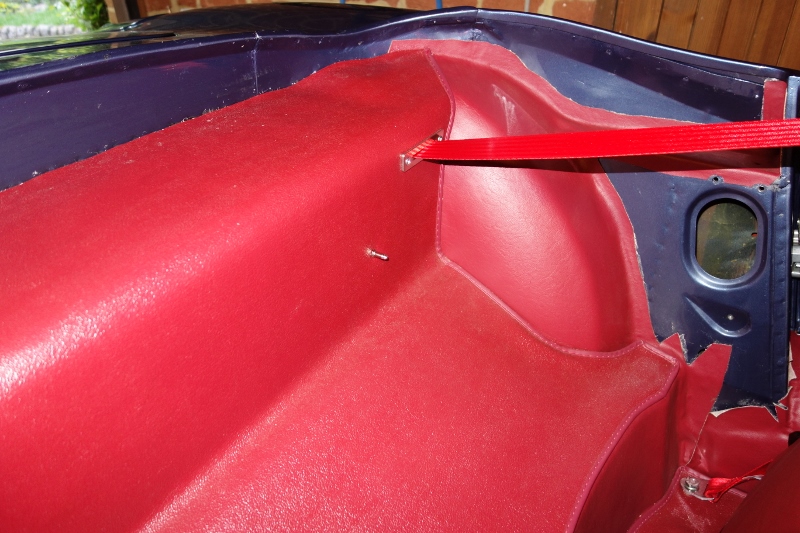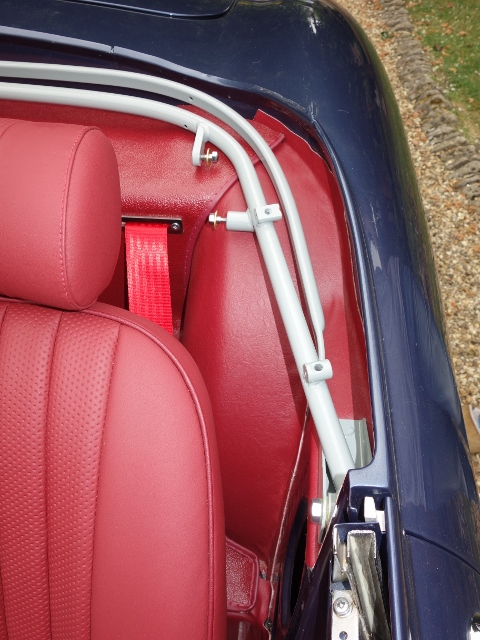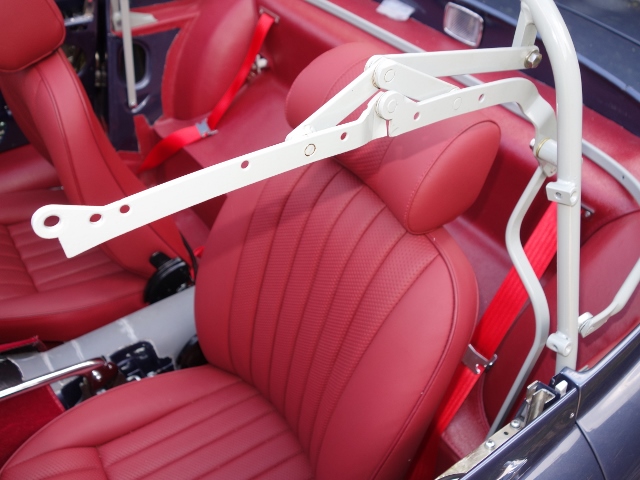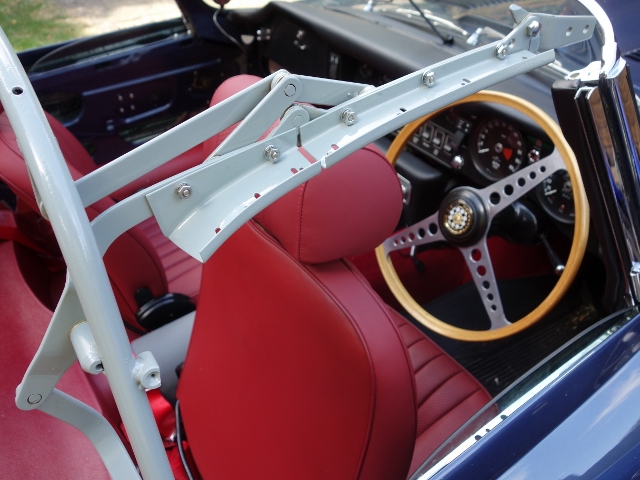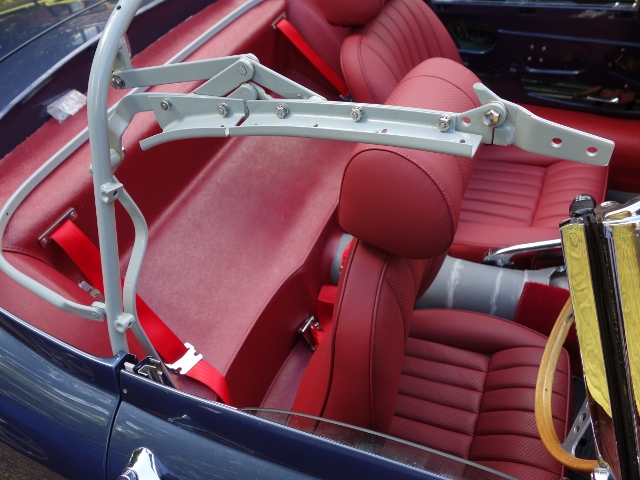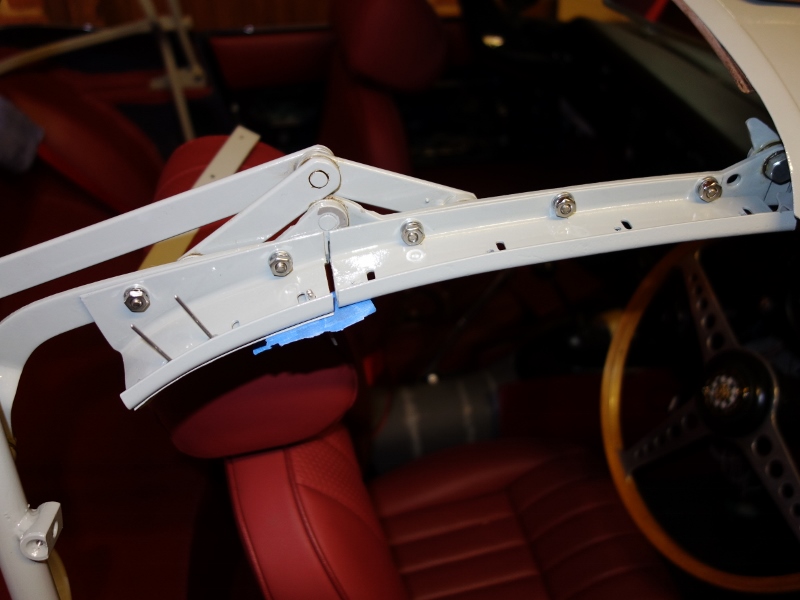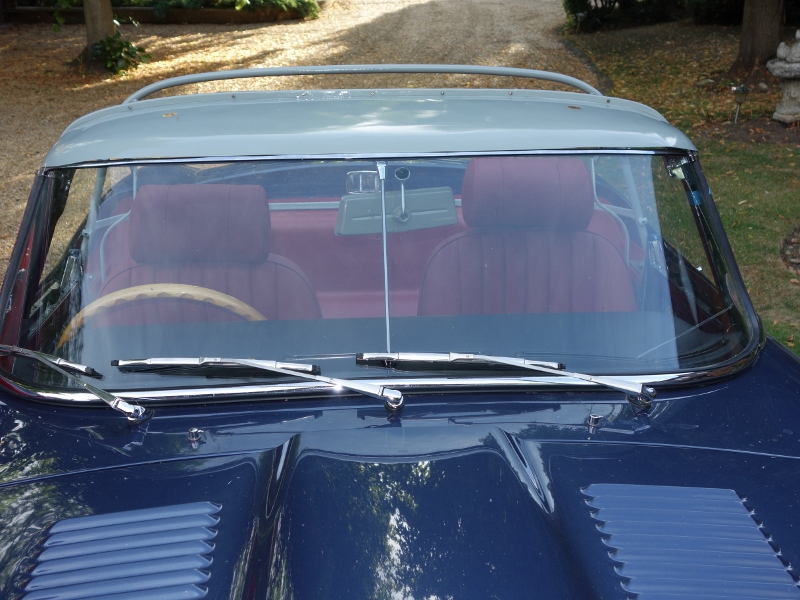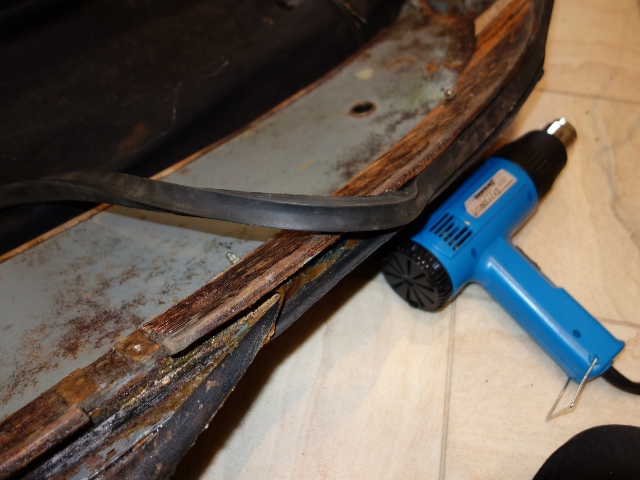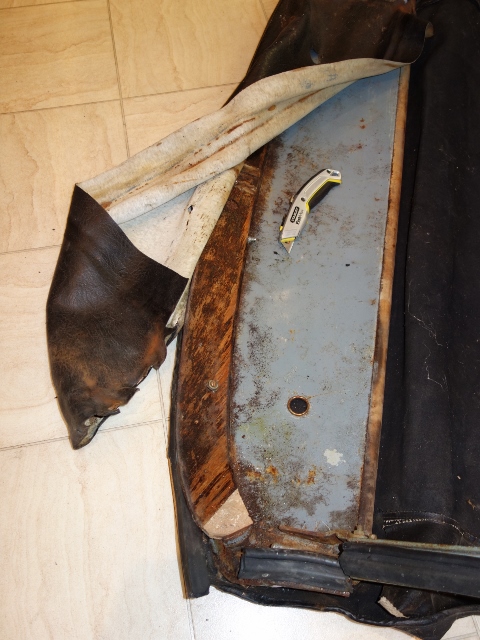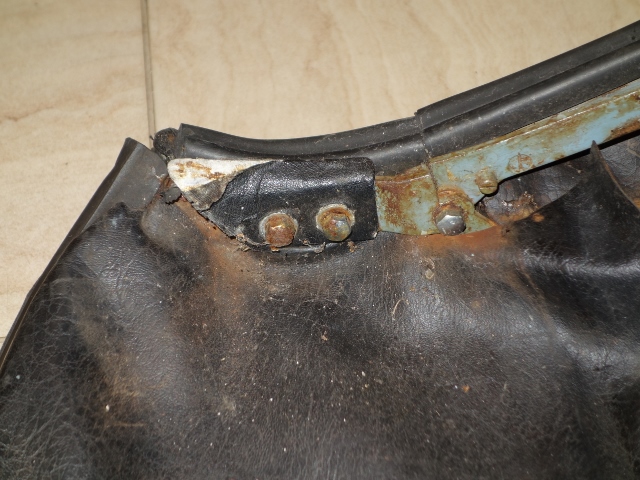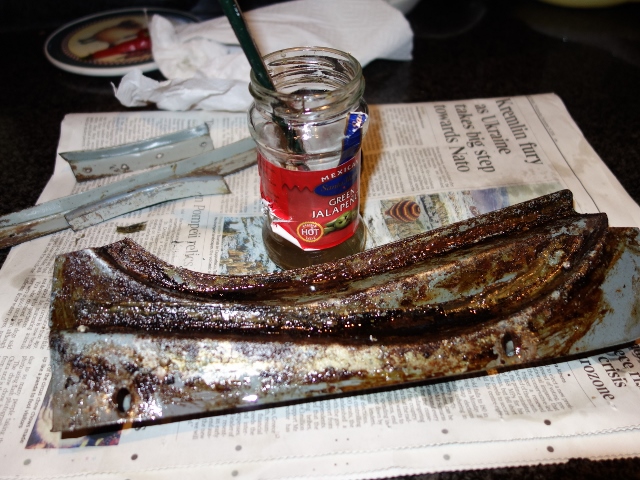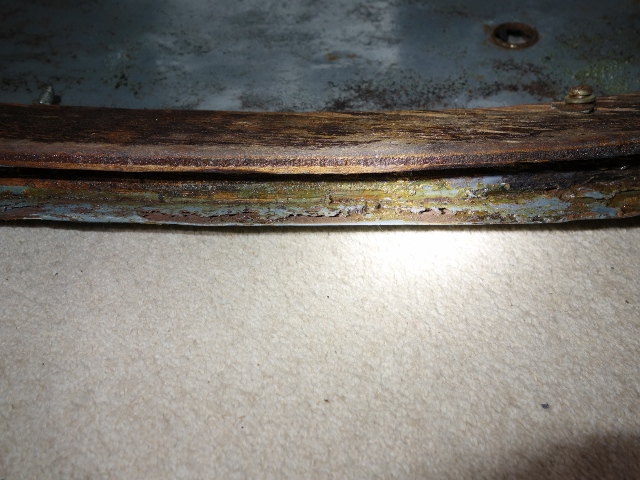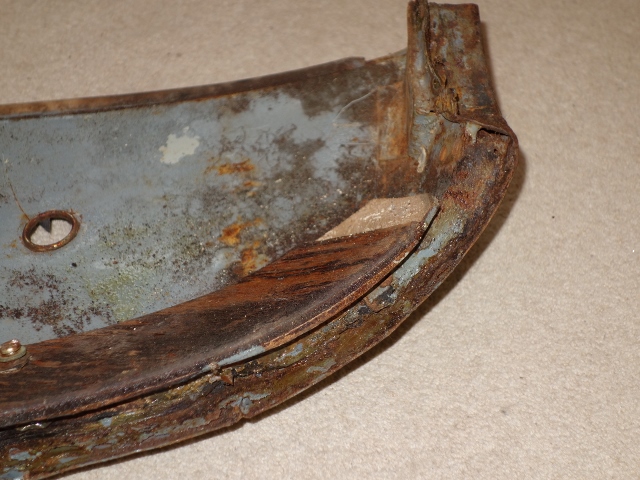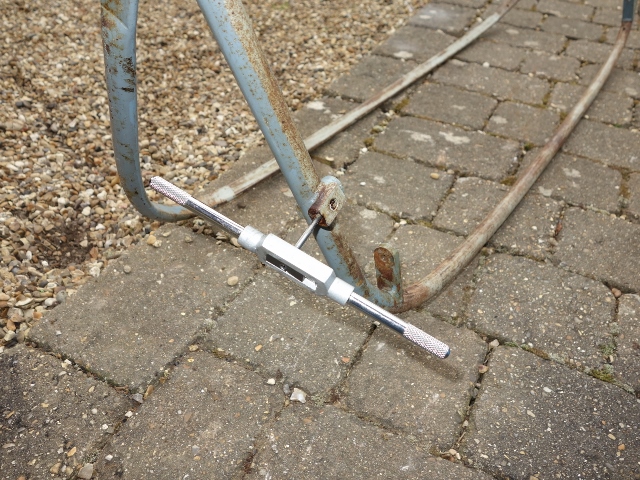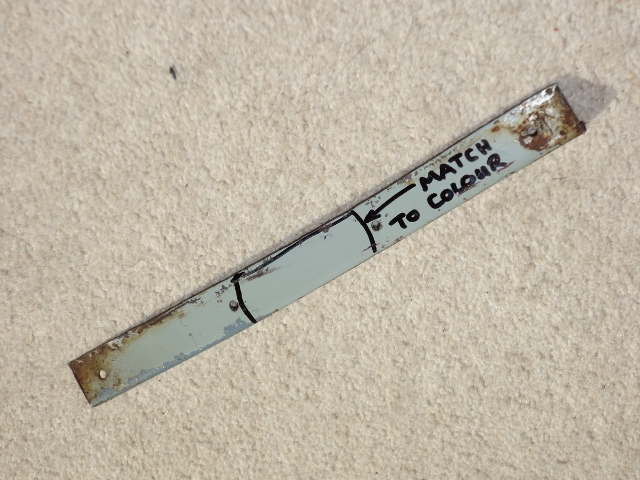The car was delivered to Suffolk & Turley in early June for the hood fitting. Hurrah! Just before it went, a fellow restorer, John, and his son dropped in and we had a very pleasant natter about our respective restorations and the problems encountered. He was over in the UK all the way from South Africa. I take my hat off to him as he’s currently restoring both a S1.5 OTS and a S2 FHC.
| John’s primrose yellow S2 FHC – it makes me want to do another one! | |
|---|---|
 |
 |
It’s bad enough securing parts while based in the UK, with incorrect or poor-fitting parts often being delivered. Planning a restoration from so far afield from the usual parts suppliers must be a logistic nightmare. By chance I’d accumulated a couple of spare parts which John was looking for.
The delivery to Suffolk & Turley was not without incident. One thing I hadn’t done since it passed its first MOT was to confirm the speedo was calibrated correctly. Travelling in tandem enabled various test to be made en route. The plan was to have the lead car sit at various speeds (50mph, 60mph & 70mph) while I matched their speed and checked my speedo reading. Using a GPS would be more accurate due to the inaccuracies of speedos but it would be sufficient for now. Speedos are typically calibrated to read between 0-10% higher than the true speed, with most around 5% over.
However the results were quite alarming – following at 70mph, my speedo was only reading 56mph! Reading 20% lower than it should, so travelling at an indicated 70mph would equate to almost 88mph (ooops!). I had always thought it felt quite a bit faster than it was indicating and had put this down to a similar feeling driving my Elise. Being so low to the ground heightens the sense of speed. At least now I know to factor in the inaccuracy until it can be calibrated ….
…. that was until a few miles from their workshop on the outskirts of Nuneaton, when a whining noise started coming from the gearbox immediately followed by the speedo packing up completely!
| Dropping the car off at Suffolk & Turley for hood fitting | Brand new Robey canopy need fixing first, it was that bad | Gaps at each ends but front of middle section is too curved |
|---|---|---|
 |
 |
 |
I had given up trying to trial fit the new Martin Robey canopy as it was so far out. Luckily RS Panels are next door to Suffolk & Turley and were given the task of fixing the shape of the canopy.
They had to weld an additional 1″ strip to the leading edge of the canopy, re-profile it to the shape of the windscreen’s top chrome and then repaint. There’s no way I would have been able to get this ‘brand new’ canopy to fit without their expertise. Another issue was the canopy didn’t have any mounting holes for attaching the wood bows. Pretty poor really.
| Additional metal tack-welded to canopy | Wood bow pre-fitted to aid fettling | Re-profiling canopy to windscreen chrome |
|---|---|---|
 |
 |
 |
After the re-worked canopy was trial fitted it was taken off to get trimmed in the standard light sand covering. I had provided S&T some tacking strips but these didn’t pass muster due to the poor fit. Replacement tacking strips were attached to the rear hood channel and covered with matching red vinyl.
| Final trail fitting of the canopy before trimming | Rear wooden tacking strips covered in vinyl |
|---|---|
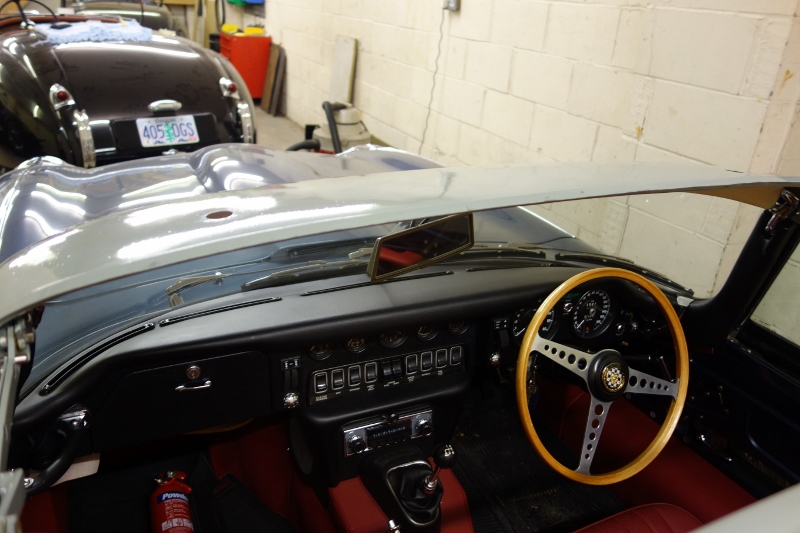 |
 |
A few pictures of the trimming of the hood canopy. They’ve done a fantastic job:
| Covering the rear wood bow | Awaiting the various fixings | Front clamps & tilt warning added |
|---|---|---|
 |
 |
 |
| Tie down strips will pass through chrome escutcheons | Tie down straps clip to front wood bow when not in use | Completed hood canopy ready for fitting |
|---|---|---|
 |
 |
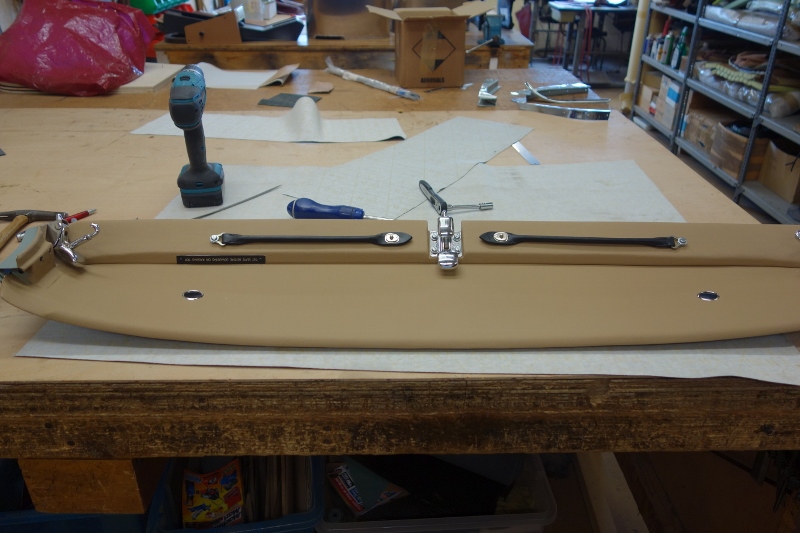 |
The canopy was then reunited with the hood frame ready for the hood canvas, in dark navy blue. Photos covering the fitting of the canvas:
| Canopy refitted to frame | Rear is attached to tacking strip |
|---|---|
 |
 |
| Rear is nailed to tacking strip and covered with chrome trim | The front edge is bonded into thee rubber seal channel | The drop glass was adjust for alignment and maximum height |
|---|---|---|
 |
 |
 |
The final touches were added to the hood – the front and rear finishing chrome strips:
| Finished rear with hood envelope hooks | Front finishing chrome |
|---|---|
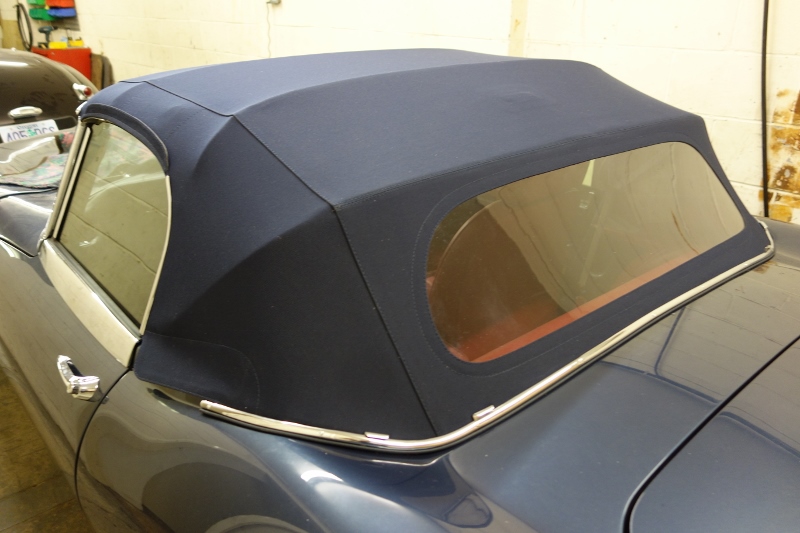 |
 |
My intention wasn’t to create a ‘trailer queen’ to be cosseted and polished. At the same time I don’t expect to be testing its watertightness too often. I certainly hadn’t expected to test it so soon after collecting the car. The trip back was peppered with downpours, some torrential.

First watertight test!
It was quite possibly the most scary drive I’ve ever had! The woefully inadequate wipers merely smeared rather than actually wipe so I couldn’t see anything. The springs on the wiper arms appear to be too weak to actually compress the rubber against the screen.
I certainly don’t want to repeat that experience and so will be applying some Gtechniq Clearvision. It’s similar to the Rain-X product although (hopefully) harder wearing. It leaves a hydrophobic layer on the glass which causes the water to bead and simply roll off the windscreen. In theory it’s possible to drive in rain without needing to use the wipers.
I’m also going to see if a slight bend can be put into the wiper arms to apply sufficient pressure to compress the rubber.
I would like to report that the hood is completely watertight but it’s not! There was a slight leak on both sides at the top of the A-post. Although this was largely my fault for cutting the A-post rubber slightly too short. I should have left rubbers with a generous excess for Suffolk & Turley to trim back when they fitted the hood.
It’s not a disaster as I should be able to detach just the length running up the side of the windscreen and stretch it to fill the gap to the hood rubber.


